#Peter II of Yugoslavia
Text

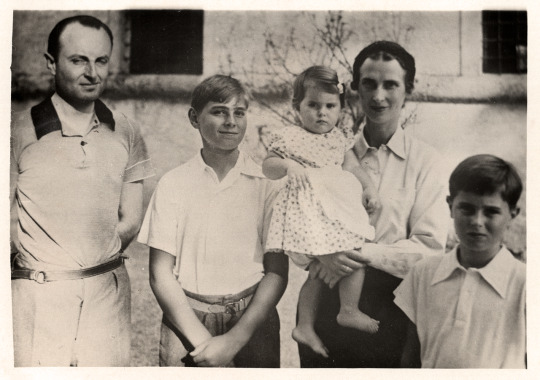
Two photos on the same day
The top photo features the royal family of Yugoslavia with the family of Elena Vladimirovna: Marina, Elizabeth with her son Hans Veit, Elena Vladimirovna, The Duke of Kent, King Peter of Yugoslavia, Tomislav of Yugoslavia, Maria of Yugoslavia (nee Romania), Nicholas and Alexander of Yugoslavia, Olga of Yugoslavia (nee Greece) with her daughter Elizabeth, Andrei of Yugoslavia, and Paul of Yugoslavia.
The bottom photo features just the family of Prince Paul: Paul, Alexander, Olga with baby Elizabeth, and Nicholas.
#romanov#elena valdimirovna#greek royal family#british royal family#yugoslav royal family#marina of greece#elizabeth of greece#hans veit zu toerring jettenbach#george duke of kent#peter ii of yugoslavia#mignon of romania#tomislav of yugoslavia#alexander of yugoslavia#nicholas of yugoslavia#andrei of yutgoslavia#elizabeth of yugoslavia#olga of greece#paul of yugoslavia#my collection#my series
23 notes
·
View notes
Photo
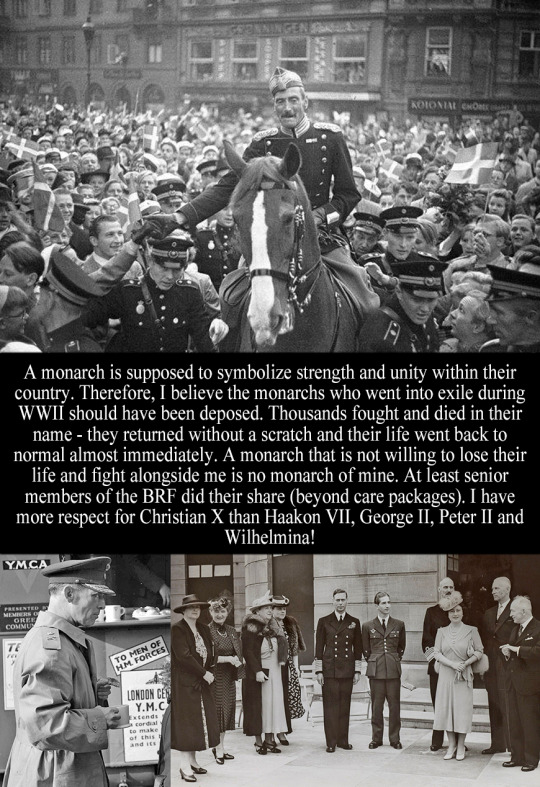
“A monarch is supposed to symbolize strength and unity within their country. Therefore, I believe the monarchs who went into exile during WWII should have been deposed. Thousands fought and died in their name - they returned without a scratch and their life went back to normal almost immediately. A monarch that is not willing to lose their life and fight alongside me is no monarch of mine. At least senior members of the BRF did their share (beyond care packages). I have more respect for Christian X than Haakon VII, George II, Peter II and Wilhelmina!” - Submitted by Anonymous
#King Christian X#Haakon VII#Peter II of Yugoslavia#queen wilhelmina#George II of Greece#british royal family#monarchy
19 notes
·
View notes
Text

King Peter II of Yugoslavia.
#peter ii of yugoslavia#kingdom of yugoslavia#balkans#house of karađorđević#Петар II Карађорђевић#Petar II Karađorđević
9 notes
·
View notes
Text

King George VI and his godson King Peter II of Yugoslavia outside Buckingham Palace, July 16, 1941. King Peter had arrived in London in June, where he joined other governments in exile from Nazi-occupied Europe. // British Pathé
‘I honored and respected him for the advice and sympathy he had given me as a refugee king taking sanctuary in his country. I know that he, too, in his turn, had an affection for me, and it was as “Uncle Bertie” that he had asked me to regard him.’
KING PETER II OF YUGOSLAVIA - A King’s Heritage (1954)
‘I am his “Koom”, a sort of permanent godfather in Serbia, & I held him at his christening. So I must look after him here. Perhaps it was destiny.’
KING GEORGE VI - diary entry (June 22, 1941)
33 notes
·
View notes
Text
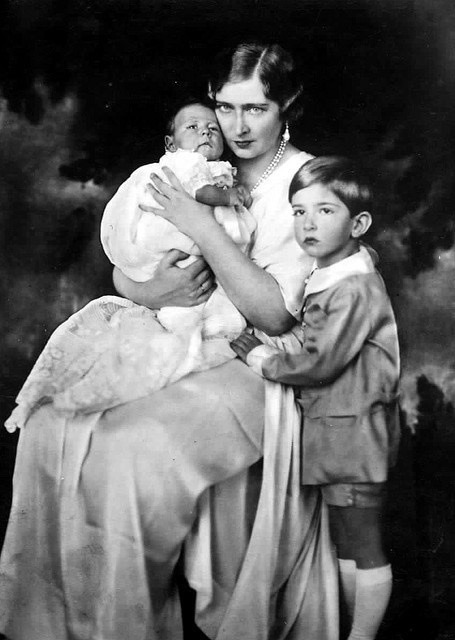
˚₊‧꒰ა ☆ ໒꒱ ‧₊˚
Queen Marie of Yugoslavia with her sons, Crown Prince Peter and new born Prince Tomislav in 1928. 💝🇷🇸
#finally posting about the royal family of my country 🥰🥰#queen marie of yugoslavia#king peter ii#prince tomislav#crown prince peter#serbian royal family#serf#serbia#karadjordjevic#karadjordjevici#karadjordjevic dynasty#romanian royal family#house of hoenzollern-sigmaringen#princess marie
14 notes
·
View notes
Text
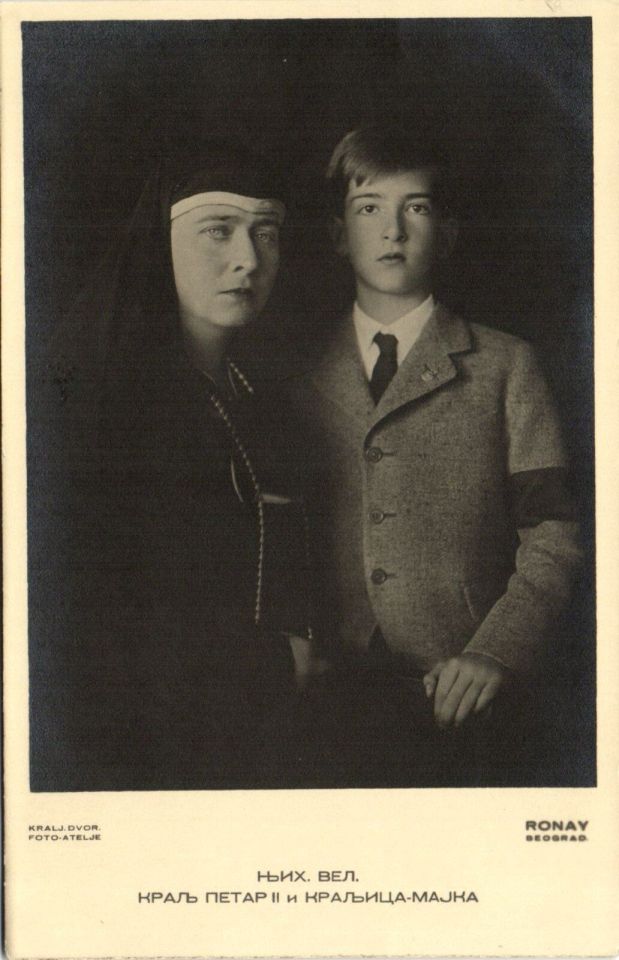
King Peter II Karađorđević of Yugoslavia with her mother Princess Maria of Romania, Queen consort of Yugoslavia
Serbian vintage postcard
#consort#carte postale#postkarte#historic#peter ii karađorđević#postcard#sepia#ansichtskarte#postkaart#yugoslavia#tarjeta#king#peter#mother#serbian#briefkaart#queen#karaorevi#ephemera#photography#romania#princess#vintage#postal#photo#maria
3 notes
·
View notes
Note
Sorry if I'm being obtuse, besides maybe obvious history I might be missing.
Why does Ivan not like Ludwig? Is he jealous of an 8 year old? That's crazy.

"The perfect little prince is insufferable. Gilbert dotes on him like a mother hen, nothing suitable for the proud eagle I liked in him. It's infuriating to see. He's mild-mannered and doesn't talk much, which is a small relief compared to most kids."
|| Ivan is SO jealous over how Ludwig is Gilbert's priority. All of his attention is on Ludwig, and not Ivan, which makes him so upset.
Lud might be small, but he is Ivan's biggest rival.
The reference here for the picture is a portrait of Peter II of Yugoslavia. It's so ludcore. ||
#is lud ACTUALLY supposed to be a baby at this era? i have genuinely no clue#my research is wishy washy at best because i cant make sense of it#hetalia#historical hetalia#aph russia#hws russia#aph germany#hws germany
105 notes
·
View notes
Photo






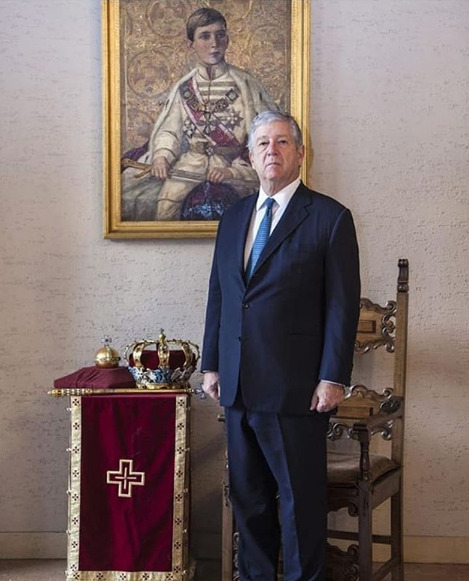


Alexander, Crown Prince of Yugoslavia
Born: July 17, 1945, Claridge's, Mayfair, London
Physique: Average Build
Height: 6′ 1″
Alexander, Crown Prince of Yugoslavia, is the head of the House of Karađorđević, the former royal house of the defunct Kingdom of Yugoslavia and its predecessor the Kingdom of Serbia. Alexander is the only child of King Peter II and his wife, Princess Alexandra of Greece and Denmark. He held the position of crown prince in the Democratic Federal Yugoslavia for the first four-and-a-half months of his life, until the declaration of the Federal People's Republic of Yugoslavia later in November 1945, when the monarchy was abolished. In public he claims the crowned royal title of "Alexander II Karađorđević" as a pretender to the throne.
The twice married with three sons, Alexander is known for his support of monarchism and his humanitarian work. He's another royal I spotted at His Majesty Charles III's coronation that I now want to do.
83 notes
·
View notes
Text
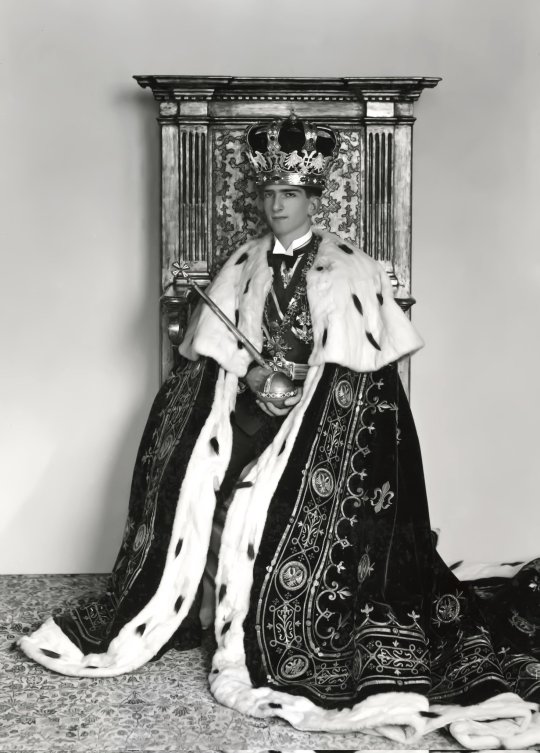
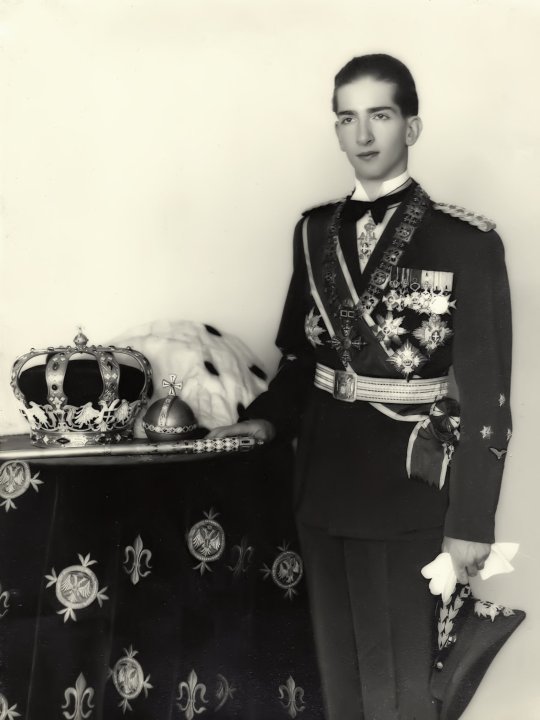
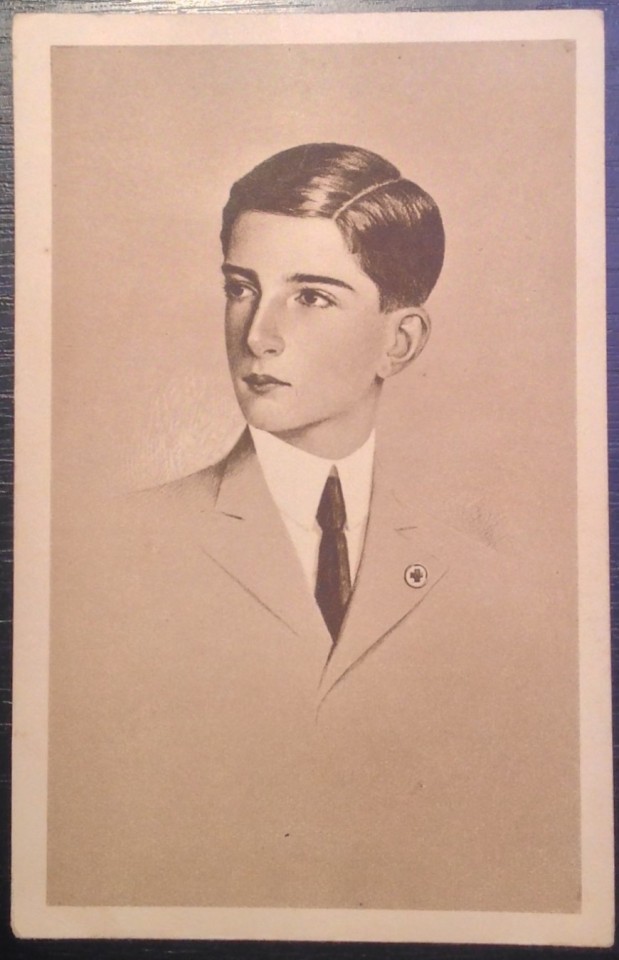
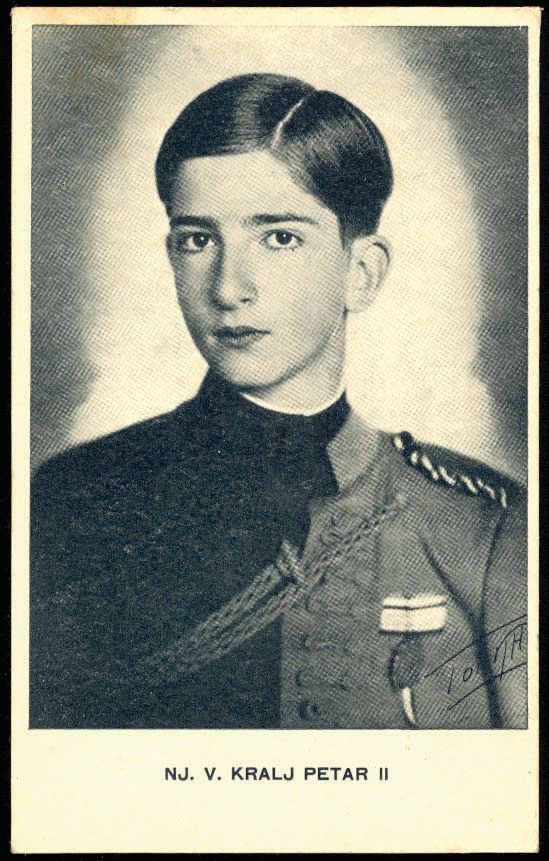
On this day exactly 100 years ago King Peter II of Yugoslavia was born, first born son of King Alexander and Princess Maria of Romania.
24 notes
·
View notes
Text

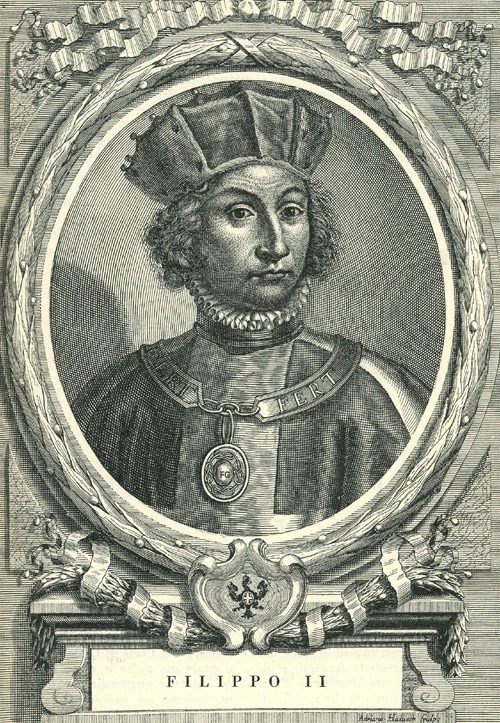



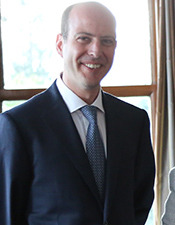



Royal Birthdays for today, February 5th:
Sanjō, Emperor of Japan, 976
Philip II, Duke of Savoy, 1438
René of Châlon, Prince of Orange, 1519
Maria Elisabeth, Archduchess of Austria, 1737
Mary, Queen of Denmark, 1972
Muhammad Ali of Egypt, Prince of the Sa'id, 1979
Peter, Hereditary Prince of Yugoslavia/Serbia, 1980
Arthur Chatto, Grandson of Princess Margaret, 1990
Jigme Namgyel Wangchuck, Crown Prince of Bhutan, 2016
#maria elisabeth of austria#queen mary#Jigme Namgyel Wangchuck#arthur chatto#prince peter#Muhammad Ali of Egypt#rene of chalon#philip ii#emperor sanjo#long live the queue#royal birthdays#Peter Karageorgevitch
10 notes
·
View notes
Note
Can you pls talk about king Alexander I of Yugoslavia & his wife mignon.
Does he was loyal to her? Did they had a loving marriage?.
I tried so hard to find some info but it's so hard!😭
Hi! Of course, I’ll try to, to the best of my knowledge.
I’m not entirely convinced whether the match was one of true love or not, but I do believe the two had respect for one another.
Alexander had fallen in love with Tatiana, Tsar Nicholas II’s second daughter, when he was a child, and he intended on marrying her, but his marital aspirations came crumbling when the Romanovs were slaughtered by the Bolsheviks. To quote Hannah Pakula, “he never fell in love again”. Mignon, too, had declared she was never going to marry amidst the marriage events of her siblings. In spite of Alexander’s heartbreak, he still expressed his wish for “practical matters, such as the consolidation of his dynasty”.
However, the idea of a marriage between Mignon and Alexander came through the auspices of Romanian politician, Take Ionescu, who supported Balkan unity. He spoke to Mignon about the “lonely young man, an orphan with a mentally unstable brother, a poor rich king in an empty palace, who was looking for a queen to brighten his life and give him a family”, which intrigued the ever so kindhearted Romanian princess.
The following passages are cited from Hannah Pakula’s book:
[…] Alexander vas invited to Sinaia for the Christmas holidays, "the time of all the year," according to the Princess, "when it must be most sad to be alone without family." A week or so after New Year's, Mignon took her suitor through the snow-covered forests on a tour of Castle Peles. They were gone some time. When they returned, she was leading him by the hand. The King of Yugoslavia spoke no English. "Mother, we have arranged it," said Mignon, who burst into tears and ran quickly out of the room.
Queen Marie was concerned. Although she knew Alexander had an excellent personal reputation and that the alliance would be extremely popular both countries, he was, in her words, "an outsider of unsure race." Shy, communicative, the King of Yugoslavia volunteered nothing about himself. Marie could not understand how her daughter could have accepted him so readily without knowing him better […]. The Princess herself seemed to have no anxieties, announcing her new status with pride to everyone around and insisting upon telegraphing government officials herself.
I interpret Mignon’s eagerness to become engaged with Alexander as a show of her empathetic nature, but also of attraction. Upon their marriage celebrations, Alexander purchased an incredibly exquisite but expensive set of jewels for his soon-to-be wife.
Now… I haven’t found much information about their actual marriage. It’s a rather vague subject. However, I think it was an agreeable one, but not exclusively loving. His mother-in-law described Alexander as “capricious”, and Mignon as “having developed a dependency on other women”. Please note that it was believed that Mignon was romantically interested in women and she allegedly had an affair with a former classmate from Heathfield School, Rosemary Cresswell, also a lady-in-waiting to her, after her husband's death. In terms of Alexander’s loyalty, there was an incident involving his sister-in-law, Elisabeth, which took place soon after Peter’s birth. Elisabeth was being very flirtatious towards Alexander, a fact which greatly bothered Mignon, but it was never mentioned if it was mutual. I haven’t read about any other cases of “infidelity”.
The only reaction on Mignon’s part after Alexander’s death that I was able to find was the following, noted by Marie of Romania: “She was extremely calm and wonderfully dignified, but her hands were shaking”.
I wish I could further elaborate, but I only possess so much information on the subject you’ve mentioned.
Unfortunately, as you’ve mentioned, resources (especially primary resources, like their diaries which have yet to be published, if they ever will be) on them are rather limited. However, I’ve managed to gather a few, though I’m afraid they might not be very accessible, since they’re not all available in English, but here they are nevertheless:
English language sources:
• The many works of Stephen Graham on King Alexander of Yugoslavia, such as Alexander of Yugoslavia: The Story of the King who was Murdered at Marseilles. You can read it here. Also, Alexander of Yugoslavia: The Strong Man of the Balkans, which you can read here.
• The website of the Royal Family of Serbia, that you can access here.
• The Last Romantic: A Biography of Queen Marie of Romania by Hannah Pakula. You can read it here.
• And of course, The story of my life by Queen Marie of Romania. Her memoirs are always very insightful and useful. You can read them here.
Romanian language sources:
• Mignon. Principesa României, Regina Iugoslaviei by Diana Mandache. It’s a very solid piece of work on Mignon, though, unfortunately, the biography has yet to be digitalised and translated into English.
• A ten page article on Mignon also written by Diana Mandache and published by the Romanian National Museum of History Journal that you can read here. It’s in Romanian, but you can use Google Translate to read it, if you’ve got the patience.
Serbian language sources:
• Marija Karađorđević - Kraljica Majka by Danica and Srđan Čolović.
• Marija Karađorđević: Kraljica Plem by Vojislava Latković.
Hope this helps :D
9 notes
·
View notes
Note
Fun question. Say if all five survived. Who would YOU see married to the Romanov kids? (Including Saint Alexei, if he survived past the disease he have.)
Hmm, well, Olga wanted to "remain Russian," but being the eldest daughter I think there would still be pressure on her for an equal marriage. Dmitri Pavlovich would be off the table after the Rasputin stuff, obviously. So she might have ended up with perhaps Prince Konstantin Konstantinovich, who apparently fancied her. Another option might be Roman Petrovich. These two are 'only' princes, but they are Romanovs, and she could stay Russian. She'd basically be doing what Xenia did with Sandro, or Olga Alexandrovna's first marriage to Peter of Oldenburg. Also . . . Olga and Vladimir Paley is an interesting idea. He's morganatic so that might be a problem, but he was a thinker and a poet, like her. They could be an interesting match!
Another option was Prince Christopher of Greece; according to Agnes de Stoeckl, who was a lady-in-waiting of Christopher’s sister Maria Georgievna, he once expressed interest in marrying Olga and went so far as to ask Nicholas about it, who gently turned him down saying Olga was too young. But he was about as “Russian” as a foreign prince could be, having been born at Pavlovsk, speaking the language fluently, and his mother Olga Konstantinovna thought he had inherited a ‘Russian soul’ from her.
I'm torn with Tatiana, because on the one hand she's the most devoted to Alix, so she might want to marry someone in Russia so she could remain with Alix, sort of like Helena and Beatrice did with Queen Victoria. But on the other hand . . . she was clearly the most natural born queen among the girls, and her talents might be wasted if she weren't on a throne somewhere. The most lofty would be David, that is the future Edward VIII/Duke of Windsor. Allegedly he preferred her after their meeting at Cowes. But that would require her changing her religion and perhaps even her name (and I don't think he'd make a good husband), so Alexander of Serbia/Yugoslavia or George II of the Hellenes (Greece) might be a better option.
I feel like Maria is the most likely to follow in Olga Alexandrovna's footsteps and marry an officer rather than a prince. I also feel like there would be generally less pressure on the younger daughters to make 'good' matches. I don't think running away with some random soldier she met at the hospital would ever, ever fly, but the officers of the fancy Petersburg regiments were generally well educated and from good, noble and/or military families, and it was pretty clear that Maria had little interest in some grand marriage to a foreign prince. Carol, of course, was a serious contender as her preferred her to Olga, but he was an absolutely terrible husband so I think she'd be much happier with an OA/Kulikovsky type scenario. But I could also see her, like with Olga, marrying a minor relative--after all, most of the Romanov men had military careers, so she could get her ‘soldier’ that way, too!
Anastasia is the biggest mystery to me! I could see her never marrying and remaining the fun, quirky aunt, or surprising everyone by becoming a queen despite being the youngest. The Danish crown prince was about her age, and according to gossip Queen Alexandrine (who had a Romanov mother herself) was hoping for one of the Little Pair for her son. She might fit right in with the fun-loving Danes, and I'm sure Maria Feodorovna would be delighted to see one of her granddaughters marrying back into the Danish family.
With Alexei, I tend to think one of the daughters of Elena Vladimirovna would just make a TON of sense. Ileana is an option too, but she's several years younger than him so he would have to wait for her to grow up. She also didn't really have any experience with Russia at all; in contrast, Olga (1903), Elizabeth (1904) and Marina (1906) spent time in Russia every year up until 1914 visiting their Russian relatives so they would be much more familiar with the culture and customs and know more people than Ileana would. It would also be an almost 'Romeo and Juliet' scenario in that the girls were from the Vladimirovichi branch of the family; Alexei marrying one of them would unite the two rival branches, and maybe the Vladimirs would chill out seeing one of their own married to the Heir.
18 notes
·
View notes
Text
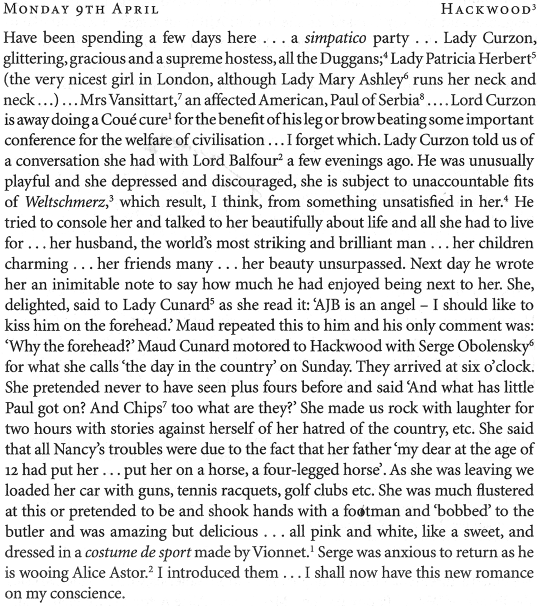
Henry ‘Chips’ Channon: The Diaries (Vol. 1), 1918-38, entry for 9th April 1923
—
Monday 9th April — Hackwood¹
Have been spending a few days here … a simpatico party … Lady Curzon, glittering, gracious and a supreme hostess, all the Duggans;² Lady Patricia Herbert³ (the very nicest girl in London, although Lady Mary Ashley⁴ runs her neck and neck …) … Mrs Vansittart,⁵ an affected American, Paul of Serbia⁶ …. Lord Curzon is away doing a Coué cure⁷ for the benefit of his leg or brow beating some important conference for the welfare of civilisation … I forget which. Lady Curzon told us of a conversation she had with Lord Balfour⁸ a few evenings ago. He was unusually playful and she depressed and discouraged, she is subject to unaccountable fits of Weltschmerz,⁹ which result, I think, from something unsatisfied in her.¹⁰ He tried to console her and talked to her beautifully about life and all she had to live for … her husband, the world’s most striking and brilliant man … her children charming … her friends many … her beauty unsurpassed. Next day he wrote her an inimitable note to say how much he had enjoyed being next to her. She, delighted, said to Lady Cunard¹¹ as she read it: ‘AJB is an angel — I should like to kiss him on the forehead’. Maud repeated this to him and his only comment was: ‘Why the forehead?’ Maud Cunard motored to Hackwood with Serge Obolensky¹² for what she calls ‘the day in the country’ on Sunday. They arrived at six o’clock. She pretended never to have seen plus fours before and said ‘And what has little Paul got on? And Chips¹³ too what are they?’ She made us rock with laughter for two hours with stories about herself and her hatred of the country, etc. She said that all Nancy’s troubles were due to the fact that her father ‘my dear at the age of 12 had put her … put her on a horse, a four-legged horse’. As she was leaving we loaded her car with guns, tennis racquets, golf clubs, etc. She was much flustered at this or pretended to be and shook hands with a footman and ‘bobbed’ to the butler and was amazing but delicious … all pink and white, like a sweet, and dressed in a costume de sport made by Vionnet.¹⁴ Serge was anxious to return as he is wooing Alice Astor.¹⁵ I introduced them … I shall now have this new romance on my conscience.
—
1. Hackwood Park, near Basingstoke in Hampshire, rented by Lord Curzon from 1906 until 1925.
2. Lady Curzon’s children by her first marriage: Alfred Duggan (1903–64), who became a minor novelist; Hubert Duggan (1904–43), Tory MP for Acton from 1931 to 1943 and anti-appeaser in the 1930s; and (Grace) Marcella Duggan (1907–95).
3. Patricia Herbert (1904–94), by courtesy Lady Patricia Herbert from 1913, daughter of the 15th Earl of Pembroke and 12th Earl of Montgomery, married in 1928 William Henry Smith, 3rd Viscount Hambleden (1903–48). She was a Lady of the Bedchamber to Queen Elizabeth from 1937 until 1994.
4. Lady Mary Sibell Ashley-Cooper (1902–36), daughter of the 9th Earl of Shaftesbury, married in 1928 Napier George Henry Sturt (1896–1940), who in 1919 succeeded his father as 3rd Baron Alington of Crichel. He died on active service in Egypt during the Second World War, though of drink rather than in action.
5. Gladys Robinson-Duff (1892–1928), daughter of General William C. Heppenheimer of the United States, married in 1921 Robert Gilbert Vansittart (1881–1957), who would be Permanent Under-Secretary at the Foreign Office from 1930 to 1938, and who would be raised to the peerage in 1941 as 1st Baron Vansittart. Vansittart was also an accomplished novelist, playwright and poet.
6. Prince Paul of Yugoslavia (1893–1976) had known Channon at Oxford and would remain one of his closest friends, and be Prince Regent of Yugoslavia (the Kingdom of the Serbs, Croats and Slovenes) from 1934 to 1941 during the minority of Peter II. He was the nephew of King Peter I and married Princess Olga of Greece and Denmark (1903–97), sister-in-law of Channon’s other closest friend, the Duke of Kent. After treating with the Germans in 1941 Paul was forced from Yugoslavia and forbidden ever to return; the post-war communist regime stripped him of his property and proclaimed him an enemy of the state. Until 1945 the British authorities held him in Kenya under house arrest. Serbia rehabilitated him posthumously in 2011, after which he was reburied with Princess Olga and their son Nicholas.
7. A psychotherapy-based cure featuring auto-suggestion, fashionable but heavily criticised at the time, developed by Émile Coué de la Châtaigneraie (1857–1926), a French psychologist.
8. A. J. Balfour, raised to an earldom in 1922.
9. World-weariness.
10. Curzon was desperate for a male heir (he had three daughters from his first marriage) to the earldom and marquessate he had obtained; various medical procedures had been followed to help Lady Curzon conceive, but no child resulted and the marriage was strained accordingly.
11. Maud Alice Burke (1872–1948), born in San Francisco, married in 1895 Sir Bache Cunard, 3rd Bt (1851–1925), grandson of the shipping line’s founder. They had lived largely apart since 1911, Cunard basing himself in Leicestershire where he enjoyed field sports. In London with their daughter Nancy Clara (1896–1965), Lady Cunard – who after her husband’s death became known as ‘Emerald’ – established one of the leading salons of the era, which thrived until the Second World War. After separating from her husband she became the mistress of Sir Thomas Beecham, the conductor, and funded many of his musical projects.
12. Prince Sergei (‘Serge’) Platonovich Obolensky Neledinsky-Meletsky (1890–1978) had been educated at Oxford and became part of the Russian diaspora after the revolution. He emigrated to America and became a successful businessman.
13. The first time in the diaries that he refers to his nickname.
14. Madeleine Vionnet (1876–1975) was one of Paris’s leading fashion designers of the interwar years.
15. Ava Alice Muriel Astor (1902–56), daughter of John Jacob Astor IV. She and Obolensky married in 1924 and divorced in 1932. She would marry four times before her death at the age of 54.
#chips channon#channon diaries#1923#1920s#grace curzon#alfred duggan#hubert duggan#marcella rice#patricia hambleden#mary alington#gladys vansittart#prince paul of yugoslavia#george curzon#arthur balfour#emerald cunard#prince serge obolensky#nancy cunard#madeleine vionnet#alice astor#hackwood park
7 notes
·
View notes
Text


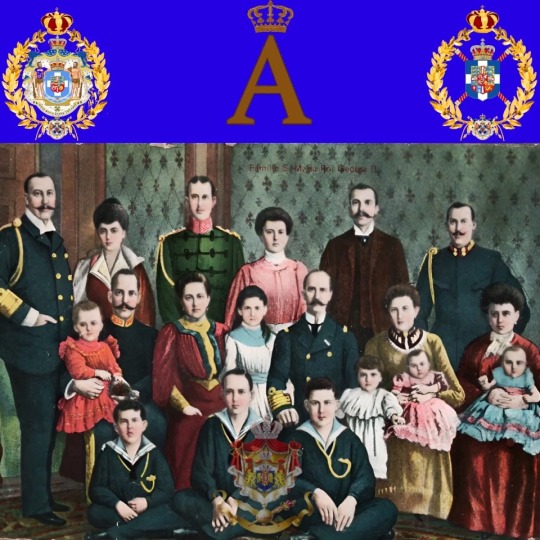

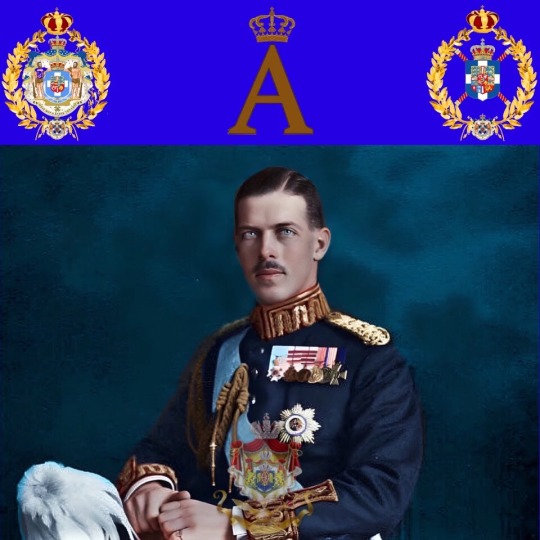



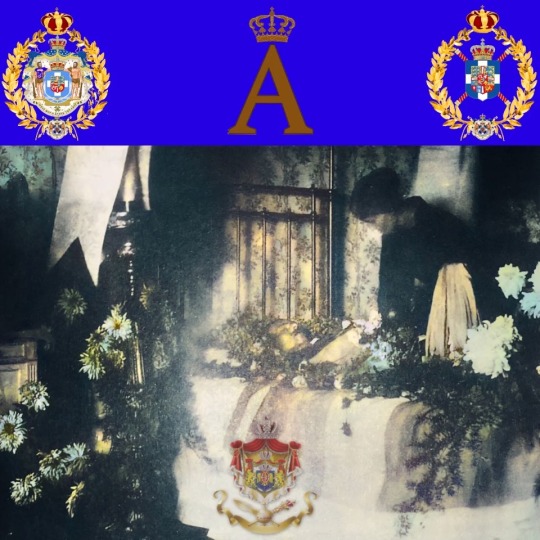

The 25th of October is 103 years since the death of HM King Alexander I of Hellenes (1 August 1893 – 25 October 1920)
Alexander was King of Greece from 11 June 1917 until his death in 1920.
The second son of King Constantine I, Alexander was born in the summer palace of Tatoi on the outskirts of Athens. He succeeded his father in 1917, during World War I, after the Entente Powers and the followers of Eleftherios Venizelos pushed King Constantine and his eldest son, Crown Prince George, into exile. Having no real political experience, the new king was stripped of his powers by the Venizelists and effectively imprisoned in his own palace. Venizelos, as prime minister, was the effective ruler with the support of the Entente. Though reduced to the status of a puppet king, Alexander supported Greek troops during their war against the Ottoman Empire and Bulgaria. Under his reign, the territorial extent of Greece considerably increased, following the victory of the Entente and their Allies in the First World War and the early stages of the Greco-Turkish War of 1919–1922.
Alexander controversially married the commoner Aspasia Manos in 1919, provoking a major scandal that forced the couple to leave Greece for several months.
The government allowed the couple to return to Greece in mid-1920. Although their marriage was legalized, Aspasia was not recognized as queen, but was instead known as "Madame Manos".At first, she stayed at her sister's house in the Greek capital before transferring to Tatoi,and it was during this period that she became pregnant with Alexander's child.
Alexander's daughter by Aspasia Manos, Alexandra , was born five months after his death. Initially, the government took the line that since Alexander had married Aspasia without the permission of his father or the church, his marriage was illegal and his posthumous daughter was illegitimate. However, in July 1922, Parliament passed a law which allowed the King to recognize royal marriages retroactively on a non-dynastic basis.That September King Constantine I —at Sophia's insistence—recognized his son's marriage to Aspasia and granted her the style of "HRH Princess Alexander of Hellenes Princess of Denmark ".Her daughter (Constantine I's granddaughter) was legitimized as HRH princess of Greece and Denmark, and later married King Peter II of Yugoslavia in London in 1944. They had one child: Alexander, Crown Prince of Yugoslavia.
Alexander visited the newly acquired territories of West Thrace, and on 8 July 1920 the new name for the region's main town—Alexandroupoli (meaning "city of Alexander" in Greek)—was announced in the king's presence. The city's previous name of Dedeagatch was considered too Turkish
On 2 October 1920, Alexander was injured while walking through the grounds of the Tatoi estate. A domestic Barbary macaque belonging to the steward of the palace's grapevines attacked or was attacked by the king's German Shepherd dog, Fritz,and Alexander attempted to separate the two animals. As he did so, another monkey attacked Alexander and bit him deeply on the leg and torso. Eventually servants arrived and chased away the monkeys,and the king's wounds were promptly cleaned and dressed but not cauterized. He did not consider the incident serious and asked that it not be publicized.
That evening, his wounds became infected; he developed a strong fever and sepsis set in. His doctors considered amputating his leg, but none wished to take responsibility for so drastic an act. On 19 October, he became delirious and called out for his mother, but the Greek government refused to allow her to re-enter the country from exile in Switzerland, despite her own protestations. Finally, the queen dowager, Olga, George I's widow and Alexander's grandmother, was allowed to return alone to Athens to tend to the king. She was delayed by rough waters, however, and by the time she arrived, Alexander had already died of sepsis twelve hours previously at a little after 4 p.m. on 25 October 1920.The other members of the royal family received the news by telegram that night.
Two days later, Alexander's body was conveyed to Athens Cathedral, where it lay in state until his funeral on 29 October. Once again, the royal family were refused permission to return to Greece, and Queen Olga was the only member who attended.Foreign powers were represented by the Prince Regent of Serbia with his sister Princess Helen wife of John Constantinovich of Russia, the Crown Prince of Sweden with his uncle Prince Eugene, Duke of Nericia, and Rear-Admirals Sir George Hope of the United Kingdom and Dumesnil of France, as well as members of the Athens diplomatic corps.
After the cathedral service, Alexander's body was interred on the grounds of the royal estate at Tatoi.The Greek royal family never regarded Alexander's reign as fully legitimate. In the royal cemetery, while other monarchs are given the inscription "King of the Hellenes, Prince of Denmark", Alexander's reads "Alexander, son of the King of the Hellenes, Prince of Denmark. He ruled in the place of his father from 14 June 1917 to 25 October 1920."According to Alexander's favorite sister, Queen Helen of Romania, this feeling of illegitimacy was also shared by Alexander himself, a sentiment that helps explain his mésalliance with Aspasia Manos
Την 25η Οκτωβρίου συμπληρώνονται 103 χρόνια από τον θάνατο του βασιλιά των Ελλήνων Αλέξανδρου Α΄ (1 Αυγούστου 1893 – 25 Οκτωβρίου 1920)
Ο Αλέξανδρος ήταν βασιλιάς της Ελλάδας από τις 11 Ιουνίου 1917 μέχρι το θάνατό του το 1920.
Ο δεύτερος γιος του βασιλιά Κωνσταντίνου Α΄, ο Αλέξανδρος γεννήθηκε στο θερινό ανάκτορο του Τατοΐου στα περίχωρα της Αθήνας. Διαδέχτηκε τον πατέρα του το 1917, κατά τη διάρκεια του Α' Παγκοσμίου Πολέμου, αφού οι δυνάμεις της Αντάντ και οι οπαδοί του Ελευθέριου Βενιζέλου ώθησαν στην εξορία τον βασιλιά Κωνσταντίνο και τον μεγαλύτερο γιο του, τον διάδοχο Γεώργιο. Μη έχοντας πραγματική πολιτική εμπειρία, ο νέος βασιλιάς αφαιρέθηκε από τις εξουσίες του από τους βενιζελικούς και ουσιαστικά φυλακίστηκε στο παλάτι. Ο Βενιζέλος, ως πρωθυπουργός, ήταν ο αποτελεσματικός ηγεμόνας με την υποστήριξη της Αντάντ. Αν και περιορίστηκε στο καθεστώς ενός βασιλιά-μαριονέτα, ο Αλέξανδρος υποστήριξε τα ελληνικά στρατεύματα κατά τη διάρκεια του πολέμου τους εναντίον της Οθωμανικής Αυτοκρατορίας και της Βουλγαρίας. Επί της βασιλείας του, η εδαφική έκταση της Ελλάδας αυξήθηκε σημαντικά, μετά τη νίκη της Αντάντ και των Συμμάχων της στον Πρώτο Παγκόσμιο Πόλεμο και τα πρώτα στάδια του ελληνοτουρκικού πολέμου του 1919-1922.
Ο Αλέξανδρος παντρεύτηκε αμφιλεγόμενα την απλοϊκή Ασπασία Μάνο το 1919, προκαλώντας ένα μεγάλο σκάνδαλο που ανάγκασε το ζευγάρι να εγκαταλείψει την Ελλάδα για αρκετούς μήνες.
Η κυβέρνηση επέτρεψε στο ζευγάρι να επιστρέψει στην Ελλάδα στα μέσα του 1920. Αν και ο γάμος τους νομιμοποιήθηκε, η Ασπασία δεν αναγνωρίστηκε ως βασίλισσα, αλλά ήταν γνωστή ως «Μαντάμ Μάνος». Στην αρχή, έμεινε στο σπίτι της αδερφής της στην ελληνική πρωτεύουσα πριν μετακομίσει στο Τατόι, και την περίοδο αυτή έγινε έγκυος στο παιδί του Αλέξανδρου.
Η κόρη του Αλέξανδρου από την Ασπασία Μάνου, η Αλεξάνδρα, γεννήθηκε πέντε μήνες μετά τον θάνατό του. Αρχικά, η κυβέρνηση υιοθέτησε τη γραμμή ότι αφού ο Αλέξανδρος είχε παντρευτεί την Ασπασία χωρίς την άδεια του πατέρα του ή της εκκλησίας, ο γάμος του ήταν παράνομος και η κόρη του νόθα. Ωστόσο, τον Ιούλιο του 1922, το Κοινοβούλιο ψήφισε νόμο που επέτρεπε στον Βασιλιά να αναγνωρίζει αναδρομικά τους βασιλικούς γάμους σε μη δυναστική βάση. Εκείνο τον Σεπτέμβριο,ο Κωνσταντίνος —με την επιμονή της Σοφίας— αναγνώρισε το γάμο του γιου του με την Ασπασία και της παραχώρησε το στυλ "ΑΒΥ Πριγκίπισσα Αλέξανδρου των Ελλήνων Πριγκίπισσα της Δανίας". Η κόρη της (η εγγονή του Κωνσταντίνου Α') νομιμοποιήθηκε ως ΑΒΥ πριγκίπισσα της Ελλάδας και της Δανίας και αργότερα παντρεύτηκε τον βασιλιά Πέτρο Β' της Γιουγκοσλαβίας στο Λονδίνο το 1944. Απέκτησαν ένα παιδί: τον Αλέξανδρο, διάδοχο της Γιουγκοσλαβίας.
Ο Αλέξανδρος επισκέφθηκε τα πρόσφατα αποκτηθέντα εδάφη της Δυτικής Θράκης και στις 8 Ιουλίου 1920 το νέο όνομα για την κύρια πόλη της περιοχής —Αλεξανδρούπολη (που σημαίνει «πόλη του Αλεξάνδρου» στα ελληνικά)— ανακοινώθηκε παρουσία του βασιλιά. Το προηγούμενο όνομα της πόλης Dedeagatch θεωρήθηκε πολύ τουρκικό
Στις 2 Οκτωβρίου 1920, ο Αλέξανδρος τραυματίστηκε ενώ περπατούσε στους χώρους του κτήματος Τατοΐου. Ένας οικόσιτος μακάκος Barbary που ανήκε στον οικονόμο των αμπελιών του παλατιού επιτέθηκε ή δέχθηκε επίθεση από τον Γερμανικό Ποιμενικό σκύλο του βασιλιά, Φριτς, και ο Αλέξανδρος προσπάθησε να χωρίσει τα δύο ζώα. Καθώς το έκανε, μια άλλη μαϊμού επιτέθηκε στον Αλέξανδρο και τον δάγκωσε βαθιά στο πόδι και τον κορμό. Τελικά έφτασαν υπηρέτες και έδιωξαν τους πιθήκους, και οι πληγές του βασιλιά καθαρίστηκαν και ντύθηκαν αμέσως, αλλά δεν καυτηριάστηκαν. Δεν θεώρησε το περιστατικό σοβαρό και ζήτησε να μην δημοσιοποιηθεί.
Εκείνο το βράδυ, οι πληγές του μολύνθηκαν. ανέπτυξε δυνατό πυρετό και εμφανίστηκε σήψη. Οι γιατροί του σκέφτηκαν να ακρωτηριάσουν το πόδι του, αλλά κανένας δεν ήθελε να αναλάβει την ευθύνη για μια τόσο δραστική πράξη. Στις 19 Οκτωβρίου, παραληρούσε και φώναξε τη μητέρα του, αλλά η ελληνική κυβέρνηση αρνήθηκε να της επιτρέψει να ξαναμπεί στη χώρα από την εξορία στην Ελβετία, παρά τις δικές της διαμαρτυρίες. Τελικά, η κηδεμόνα της βασίλισσας, Όλγας, χήρα του Γεωργίου Α' και γιαγιά του Αλέξανδρου, επετράπη να επιστρέψει μόνη στην Αθήνα για να φροντίσει τον βασιλιά. Ωστόσο, καθυστέρησε από τα ταραγμένα νερά, και όταν έφτασε, ο Αλέξανδρος είχε ήδη πεθάνει από σήψη δώδεκα ώρες πριν, λίγο μετά τις 4 μ.μ. στις 25 Οκτωβρίου 1920. Τα άλλα μέλη της βασιλικής οικογένειας έλαβαν τα νέα με τηλεγράφημα εκείνο το βράδυ.
Δύο ημέρες αργότερα, η σορός του Αλέξανδρου μεταφέρθηκε στον Καθεδρικό Ναό Αθηνών, όπου παρέμεινε στην κατάσταση μέχρι την κηδεία του στις 29 Οκτωβρίου. Για άλλη μια φορά, η βασιλική οικογένεια αρνήθηκε να επιστρέψει στην Ελλάδα και η βασίλισσα Όλγα ήταν το μόνο μέλος που παρευρέθηκε. Οι ξένες δυνάμεις εκπροσωπήθηκαν από τον Πρίγκιπα Αντιβασιλέα της Σερβίας με την αδελφή του Πριγκίπισσα Ελένη, σύζυγο του Ιωάννη Κωνσταντίνοβιτς της Ρωσίας, τον διάδοχο της Ρωσίας Σουηδία με τον θείο του Πρίγκιπα Ευγένιο, Δούκα της Νερίσιας, και τους Αντιναύαρχους Sir George Hope του Ηνωμένου Βασιλείου και Dumesnil της Γαλλίας, καθώς και μέλη του διπλωματικού σώματος της Αθήνας.
Μετά τη λειτουργία του καθεδρικού ναού, η σορός του Αλεξάνδρου ενταφιάστηκε στο βασιλικό κτήμα στο Τατόι. Η ελληνική βασιλική οικογένεια ποτέ δεν θεώρησε τη βασιλεία του Αλεξάνδρου ως απολύτως νόμιμη. Στο βασιλικό νεκροταφείο, ενώ σε άλλους μονάρχες δίνεται η επιγραφή «Βασιλιάς των Ελλήνων, Πρίγκιπας της Δανίας», του Αλεξάνδρου γράφει «Αλέξανδρος, γιος του Βασιλιά των Ελλήνων, Πρίγκιπας της Δανίας. Κυβέρνησε στη θέση του πατέρα του από το 14 Ιουνίου 1917 έως 25 Οκτωβρίου 1920.
#kingconstantine#danishroyalfamily#crownprincepavlos#queenannemarie#greek royal family#house of romanov#greekroyals#crownprincessmariechantal#danishroyals#princeconstantinealexios
2 notes
·
View notes
Text

Queen Maria of Yugoslavia with her children:
Prince Peter of Yugoslavia, later King Peter II
Prince Tomislav of Yugoslavia
Prince Andrew of Yugoslavia
Serbian vintage postcard
#historic#briefkaart#maria#queen#postkaart#children#carte postale#ephemera#yugoslavia#peter#tarjeta#photo#postcard#postal#peter ii#postkarte#serbian#prince#king#later#ansichtskarte#andrew#tomislav#sepia#photography#vintage
3 notes
·
View notes
